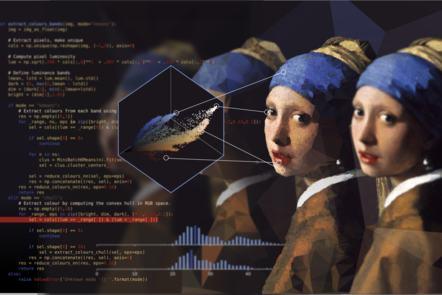MOOC List is learner-supported. When you buy through links on our site, we may earn an affiliate commission.

MOOC List is learner-supported. When you buy through links on our site, we may earn an affiliate commission.
You’ll have the opportunity to improve your understanding of the fundamental aspects of applied data science methods and learn how to apply your newly acquired knowledge for the benefit of your organisation.
What topics will you cover?
- The terminology used in the data science sector
- Curve fitting and plotting of statistical distributions
- Visualisation techniques
- Making use of geolocation data
- Classification and clustering
- Feature extraction
- Clustering text
- Supervised and unsupervised learning
- Application of machine learning to text and images
What will you achieve?
By the end of the course, you‘ll be able to...
- Describe the principle methods of data cleaning and preparation, including working with unstructured text data
- Identify different features in a distribution and the resulting meaning
- Compare different visualisation techniques
- Explore and interpret visualised data
- Modify underlying Python code to change the look of a visualisation
- Explore the use of multidimensional data using the example of geolocation
- Identify patterns in data using clustering and classification techniques
- Discuss the ethical considerations in the use of data for data science
- Explore the use of data transformations involving different types of data and representation: text to vectors, n-grams, tagging data
- Explain the purpose of distance metrics in high-dimensional data
- Apply clustering to high-dimensional data
- Explore how you can extract data from social repositories
- Compare and contrast supervised and unsupervised models
- Describe the core concepts behind neural networks and their applications
- Compare the advantages and disadvantages of NN over other classification methods
- Evaluate the results of machine learning algorithms based on simple techniques
Who is the course for?
This course is for anyone who’d like to learn more about data science.
The course will be useful for students, novice programmers, and any professionals who interact with data.
For professionals or students who are new to the subject, the course will provide a foundation for advancing your career using data science and data analytics skills.
For those already working in the IT industry, you’ll have the opportunity to strengthen and develop your knowledge and expertise in the area of data analytics and, more generally, data science.
There are no programming prerequisites for students taking this module, but you should have a basic understanding of mathematical thinking and elementary statistics.
MOOC List is learner-supported. When you buy through links on our site, we may earn an affiliate commission.
MOOC List is learner-supported. When you buy through links on our site, we may earn an affiliate commission.
